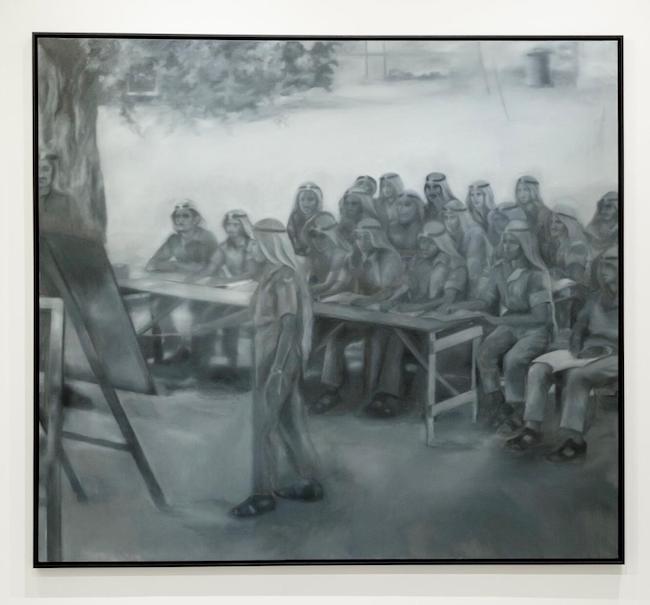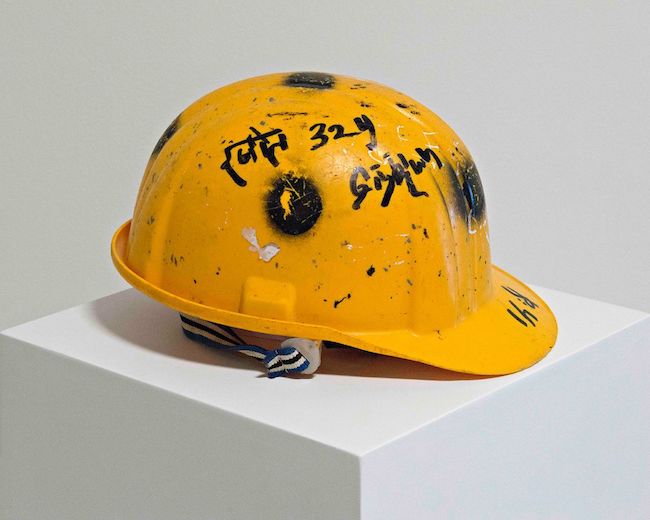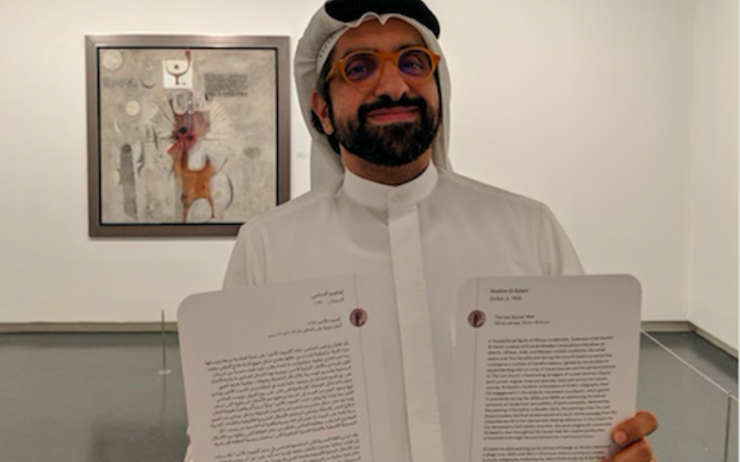ARTICLE BY EMILIE SAMAAN
Art collector and founder of the Barjeel Foundation in Sharjah, Sultan Sooud Al-Qassemi is today one of the most influential figures in Arab art in the Gulf. Very active on social networks, he also publishes for renowned newspapers such as The Guardian , The Independent Post , The Huffington Post or for the UAE daily The National .
In addition to his activity as a columnist, Sultan Sooud Al-Qassemi has been a visiting researcher in several major American universities such as New York University, Yale or even at Boston College. Each time, he leads courses on “Politics of modern art in the Middle East” and develops projects such as the Cultural Majlis. Inspired by the traditional majlis found in the Gulf countries, he transforms the living room of his American apartment into a place of exchange and dialogue where students, intellectuals and artists from the Arab world meet.
Since September, Sultan Sooud Al Qassemi joined the American University of Paris as a teacher . An opportunity for him to rediscover the Parisian capital, which he already knows from having studied there between 1994 and 1998.
Lepetitjournal.com/dubai: When and why did you start collecting works of art?
Sultan Sooud Al-Qassemi: I started visiting art galleries and exhibitions with my parents in the late 1990s and bought my first work in 2002, most certainly a painting by the Emirati artist Abdel Kader Al Rais. I liked the idea of owning original works and wanted to be in contact with the artists and understand their ideas. We can say that there is a real human dimension in my approach as a collector.
You created the Barjeel Art Foundation in Sharjah in 2010, what was your objective and why did you choose Sharjah?
I am interested in French as well as Pakistani or Iranian art, however I have always thought that art from the Arab world was underrepresented and I wanted to support artists from this region. We chose to settle in Sharjah because I am from this Emirate and Sharjah has been more open to host my collection, this is explained by the fact that the emirate has had a strong artistic presence for years. Today there are around 1200 works, however my tastes have evolved over the years, I started out buying contemporary works in the early 2000s and now I’m more interested in modern art from the 50s- 70, because the political upheavals of this period fascinate me.We attach importance to the conservation and preservation of works, we buy paintings that need to be restored. It is our duty to protect them! Today we collaborate with a restoration workshop based in Dubai whereas previously our works were restored in Great Britain which from a logistical point of view was very complicated.

How do you describe the UAE art scene?
The Emirati art scene is dynamic, it evolves rapidly, it is also distinguished by its diversity since it is composed of local artists but also artists from other Arab countries. Today the majority of artists are young women and they play an important role. This was not the case in the 70s, 80s where the majority of artists were men like: Hassan and Hussain Sharif or Abdelkader Al Rais.
And precisely what is the place of women artists today?
May I say that we are beyond male / female roles in the art world. The art world in the UAE is largely dominated by women, which is a good thing. Today women are at the head of all the galleries, museums in Dubai, Sharjah and the Ministry of Culture is also headed by a woman (Noura Bint Mohammed Al Kaabi). Men like me or Manuel Rabaté, the director of Louvre Abu Dhabi, are exceptions. I would add that this was not the case in the 90s. That’s very good, but we still have to make sure that men continue to be involved in the world of art and culture. Unfortunately by taking the direction of these institutions, many women who are also artists put an end to their artistic career, we have to find the right balance to allow them to continue producing their art. They need to have time to create and I really hope we can find a way to say to them: please take one day off a week to paint. What is too bad about all of this is that we are losing our creativity.
What type of visual art do Emirati or Arab artists residing in the Emirates turn to?
Young artists very often use new technologies. The artists went directly to digital art, photography, installations without going through painting, it’s as if they had skipped a step. Our country is ahead in many areas and somehow we are victims of our own success. I have no problem with artists using new technologies, but I must admit that I would like them to give more importance to painting. There are some artists like Alia Lootah who do beautiful paintings that I really like.
What are the training courses chosen by the artists?
Many artists choose to train in Sharjah in particular at the School of Fine Arts because the level is excellent. The artists attend prestigious schools such as the American University of Sharjah, Dubai or even design schools. The majority of artists come from relatively well-off families and many of them also have a job in the administration in addition to their artistic activity. There are only very few artists who can live entirely from their art, perhaps the brothers Ramin, Rokni and Hesam Haerizadeh who are exhibited at the Isabelle Van den Eynde Gallery in Alserkal.
What are the subjects / themes that the artists tackle?
I think that in becoming adults young artists are less engaged than during their student life and this is reflected in their art. The younger generation should be more critical. In my opinion they should tackle more topical issues and react more to contemporary events. However, the work of artist Asmaa Khoory exhibited at Galerie Alserkal is quite remarkable and shows real commitment, it is a very good example.

This article was originally published in Le Petit Journal on September 26, 2020. A screenshot of this article can be downloaded here.
